Open Bite
Next is the open bite. Treatment to an open bite depends on the cause. There are two types of open bites: one in which the front teeth are widely open and the other in which the molars as well as the front teeth are open as a whole and only the back molars are touching.
In the former case, if the front teeth are open, something is caught in that area, often finger sucking or poor tongue control, which causes the open bite. The latter may be caused by a problem with the temporomandibular joint. Therefore, it is important to examine and diagnose the patient, including the temporomandibular joint. In both cases, we want to start treatment as soon as possible when we notice it.
Look at the photo below. This patient's back molars are in contact, but her front teeth are wide open. She had a habit of finger sucking. It affects pronunciation, and it would be a problem if it triggered a tongue habit. We asked to wear an appliance(tongue guard) to prevent fingers from entering the front teeth. The effect of the tongue guard was immediately apparent. The upper and lower front teeth gradually came closer together. If there is no problem with the anterior-posterior relationship between the upper and lower jaw positions, the front teeth will overlap and settle like this.
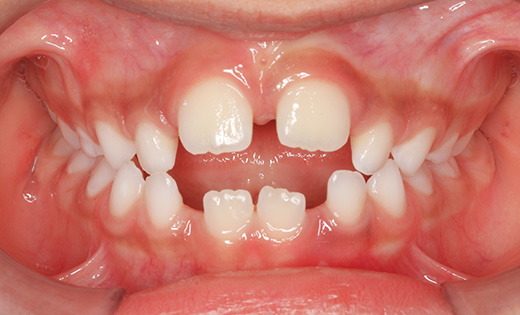
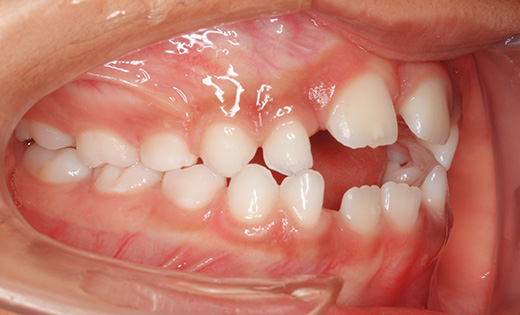
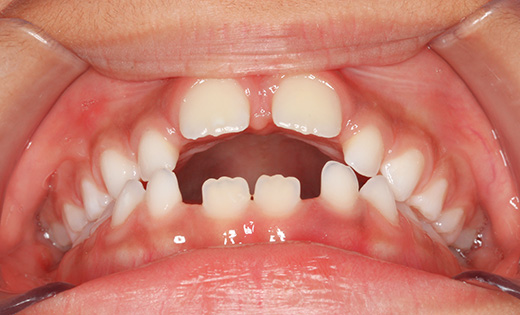
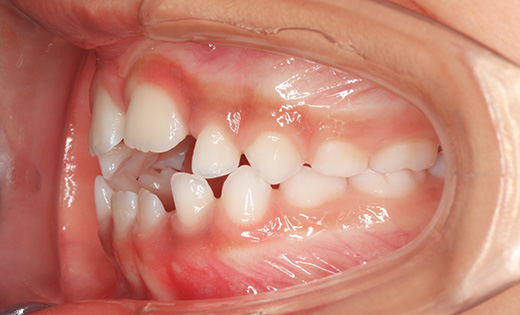
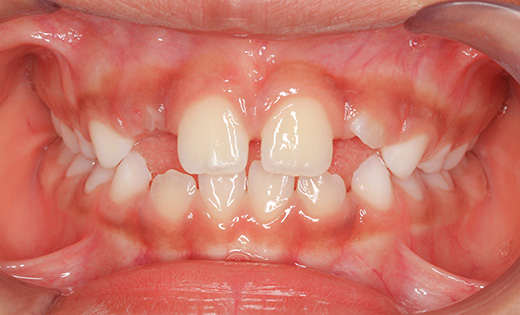
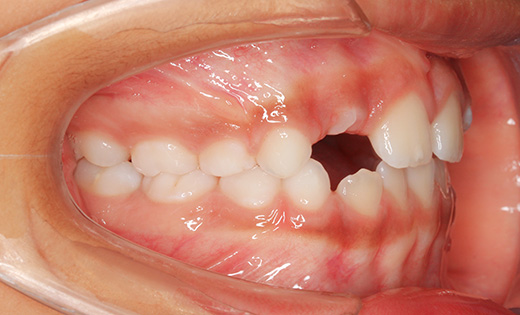
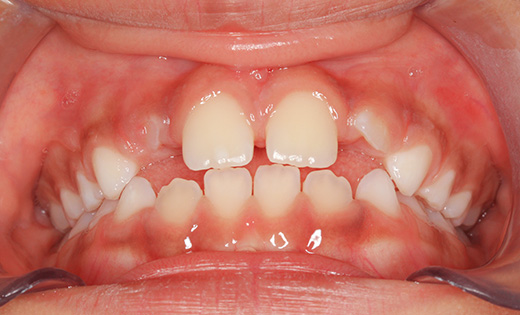

Intraoral photographs before treatment on the left and after treatment on the right. Before treatment, the back molars are engaged, but the front teeth are wide open. Something is between the upper and lower front teeth and is preventing the front teeth from overlapping. When the appliance is placed, the obstruction will be gone, in this case a finger and the front teeth will gradually come closer together and overlap.
The patient wore a tongue guard on the upper jaw for 7 months. There was a slight misalignment of the bite, so a splint was placed on the lower jaw to stabilize the bite. There were no major problems with the position of the upper and lower jaw, so the teeth were not moved. The treatment period was one year and two months, and the treatment cost was 350,000 yen (excluding tax, at that time).
- Generally, the occurrence of caries, gingivitis, and TMJ disorder are often mentioned as treatment risks in this period, but they did not occur at all in this case.
To summarize this case, timing is important in the initial treatment. Small efforts can earn big results. We can also use growth as our advantage. Sometimes it is important to wait and see, but we must not miss the opportunity.
Generally speaking by performing, phase 1 treatment does not mean that full orthodontic treatment can be avoided. There are some treatments that can only be done before the period of accelerated growth, if not later orthodontic treatments may become more complicated or difficult. On the other hand, if we can solve some skeletal problems in the phase 1 treatment, we can simplify the full orthodontic treatment.
